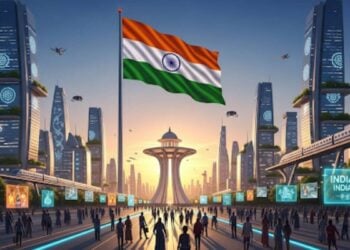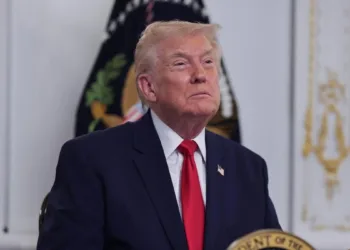In a groundbreaking economic forecast that underscores India‘s rising global stature, a comprehensive EY report released on August 27, 2025, projects that India’s economy could reach USD 20.7 trillion in terms of purchasing power parity (PPP) by 2030 and may emerge as the second-largest economy by 2038 with USD 34.2 trillion GDP. This remarkable trajectory positions India as a dominant force in the global economic landscape within the next decade and a half.
Table of Contents
India Key Economic Projections
| Milestone | Timeline | Projected Value |
|---|---|---|
| PPP GDP 2030 | 6 years away | USD 20.7 trillion |
| PPP GDP 2038 | 14 years away | USD 34.2 trillion |
| Global Ranking | By 2038 | 2nd largest economy |
| Median Age 2025 | Current | 28.8 years |
| Debt-to-GDP 2030 | Projected | 75.8% (down from 81.3%) |
India’s Unique Economic Advantages
Among the largest economies, India stands out with a median age of 28.8 years in 2025, the second-highest savings rate, and a government debt-to-GDP ratio projected to decline from 81.3 per cent in 2024 to 75.8 per cent by 2030, unlike its peers, where debt levels are rising. This combination of favorable demographics and fiscal discipline creates an ideal foundation for sustained economic growth.

Demographic Dividend
India’s young population represents a massive economic opportunity. By 2030, the country is expected to add around 75 million middle-income class and 25 million rich and affluent households, with these segments projected to account for 56% of the population. This demographic shift will position India as one of the fastest-growing consumer markets globally.
What Makes This Growth Possible?
Strong Economic Fundamentals
India is emerging as one of the most dynamic among the world’s five largest economies, with strong economic fundamentals including high savings and investment rates, favourable demographics, and a sustainable fiscal position, according to the August 2025 EY Economy Watch report.
The PPP Advantage
Purchasing Power Parity (PPP) adjusts for cost differences between countries, providing a more accurate picture of economic size and living standards. India’s lower cost base means its domestic purchasing power is significantly higher than nominal GDP figures suggest.
Global Economic Positioning
While China leads in overall size with a projected $42.2 trillion, India’s trajectory shows remarkable consistency and sustainability. The EY analysis, based on IMF projections, suggests India will maintain its growth momentum while other major economies face various challenges.
Competitive Landscape
- China: Projected $42.2 trillion (maintaining first position)
- India: $34.2 trillion (overtaking current second-place holder)
- United States: Facing relative decline in PPP terms
- European economies: Struggling with demographic and fiscal challenges
Key Growth Drivers
1. Demographic Advantage
India’s median age of 28.8 years provides a substantial workforce advantage over aging developed economies, ensuring sustained productivity growth and consumer demand.
2. High Savings Rate
As the economy with the second-highest savings rate globally, India has abundant domestic capital for investment and growth financing.
3. Improving Fiscal Health
Unlike many developed nations with rising debt levels, India’s debt-to-GDP ratio is projected to improve significantly by 2030.

4. Digital Transformation
India’s rapid digitization across sectors is boosting productivity and creating new economic opportunities.
For comprehensive coverage of India’s economic growth story and global market developments, explore our economic analysis section where we track major financial trends.
Challenges and Opportunities Ahead
While the projections are optimistic, India faces several challenges that could impact this trajectory:
Opportunities:
- Massive consumer market expansion
- Digital infrastructure development
- Manufacturing sector growth potential
- Service sector globalization
Challenges:
- Infrastructure development needs
- Employment generation requirements
- Environmental sustainability concerns
- Regional economic disparities
What This Means for Global Markets
India’s rise to the second-largest economy position will reshape global trade patterns, investment flows, and geopolitical dynamics. International businesses are already recognizing India’s potential, with foreign direct investment flowing into key sectors like technology, manufacturing, and renewable energy.
Stay updated on India’s economic transformation and global market shifts through our business news coverage for the latest developments.
The Road to 2038
This EY forecast represents more than just numbers—it reflects India’s potential to become a major driver of global economic growth. The combination of favorable demographics, strong economic fundamentals, and improving fiscal health creates a compelling case for sustained expansion.
As India progresses toward this ambitious goal, monitoring key indicators like savings rates, investment patterns, and demographic trends will be crucial for understanding whether these projections materialize.
Follow our comprehensive economic coverage for the latest updates on India’s growth story, global market trends, and major economic developments shaping the future.
Frequently Asked Questions
Q: How reliable are these 2038 economic projections for India?
A: The EY report is based on IMF projections and considers India’s strong economic fundamentals including favorable demographics, high savings rates, and improving debt-to-GDP ratios. While long-term forecasts always carry uncertainty, India’s current trajectory and structural advantages support the optimistic outlook. However, achieving this requires sustained policy focus and addressing infrastructure and employment challenges.
Q: What does “PPP terms” mean and why is it important for measuring India’s economy?
A: Purchasing Power Parity (PPP) adjusts GDP for cost differences between countries, providing a more accurate comparison of economic size and living standards. For India, PPP measurements are particularly relevant because the country’s lower cost base means domestic purchasing power is much higher than nominal GDP suggests, making PPP a better indicator of the economy’s actual size and impact.








